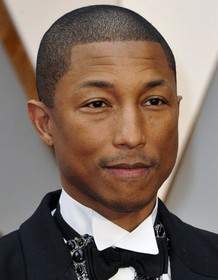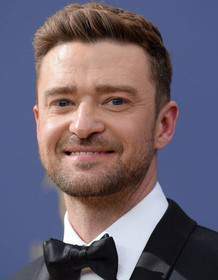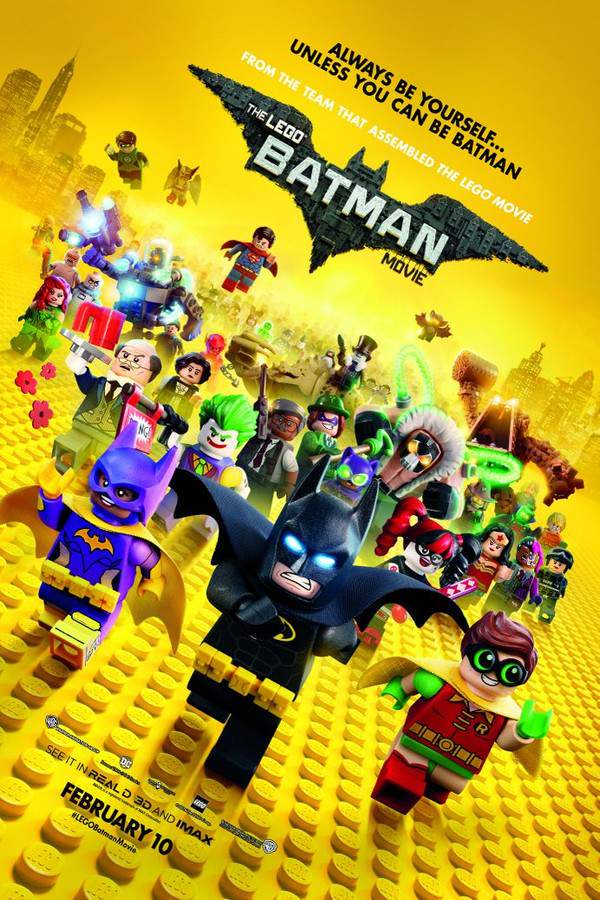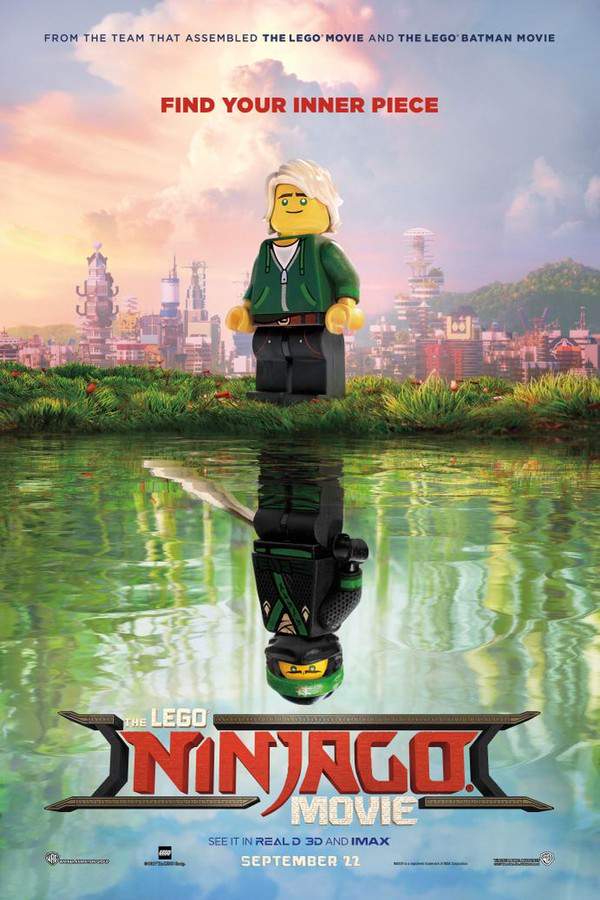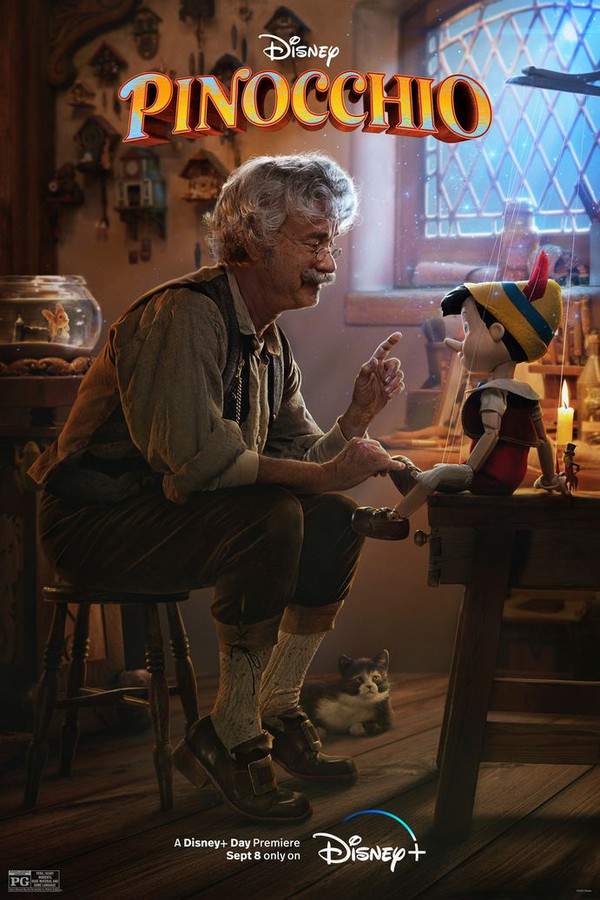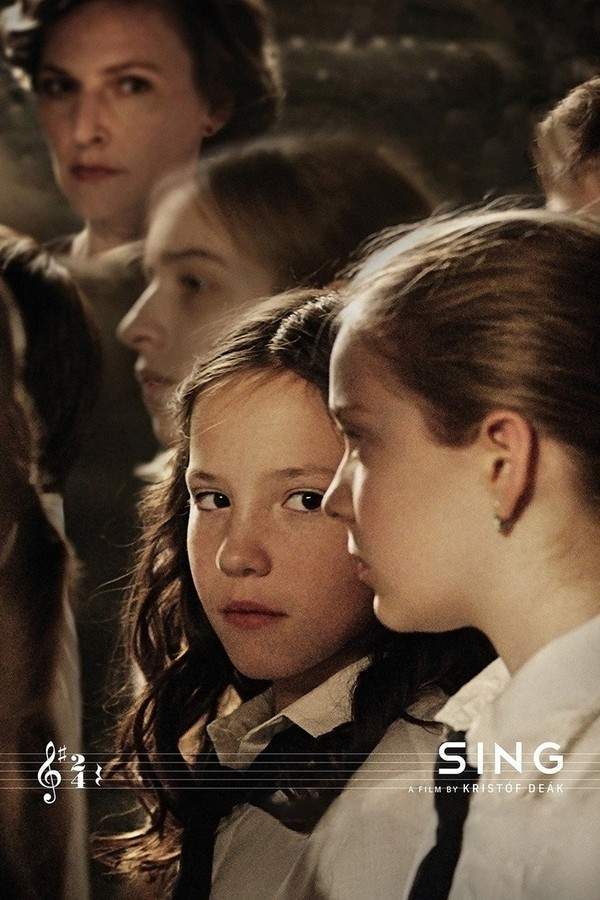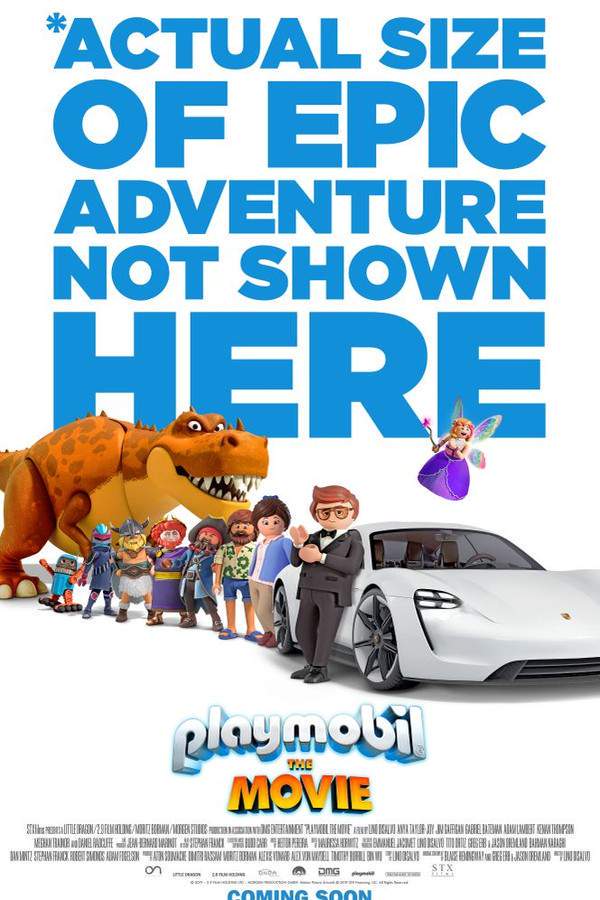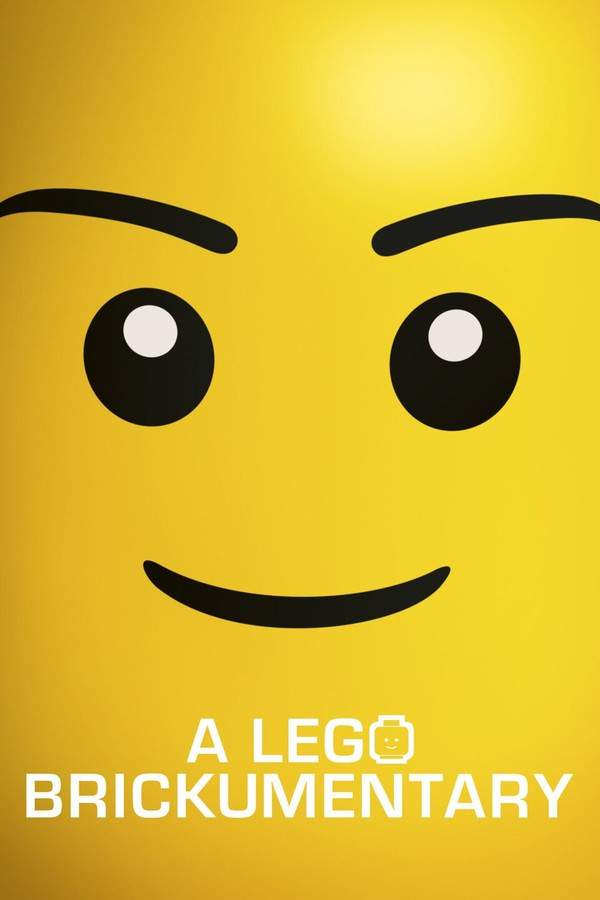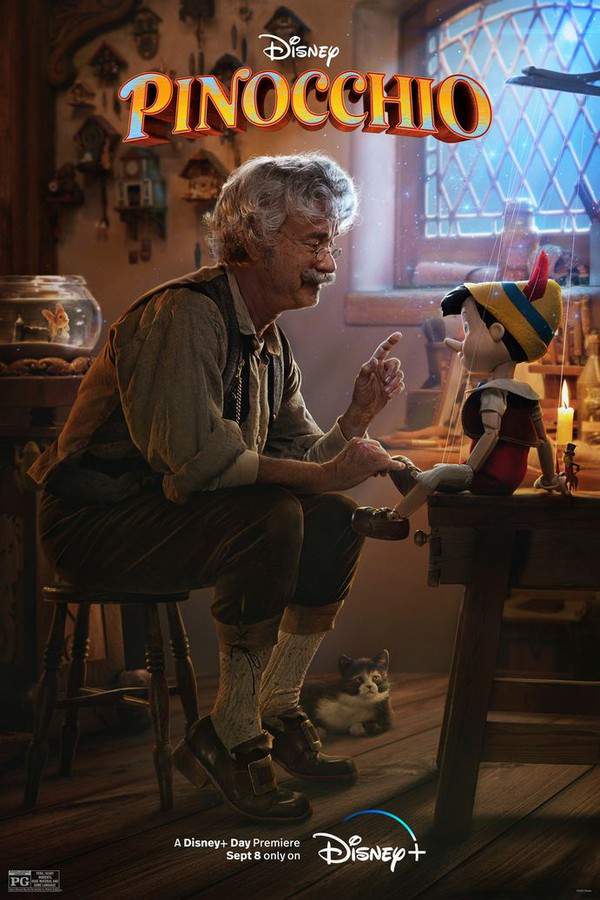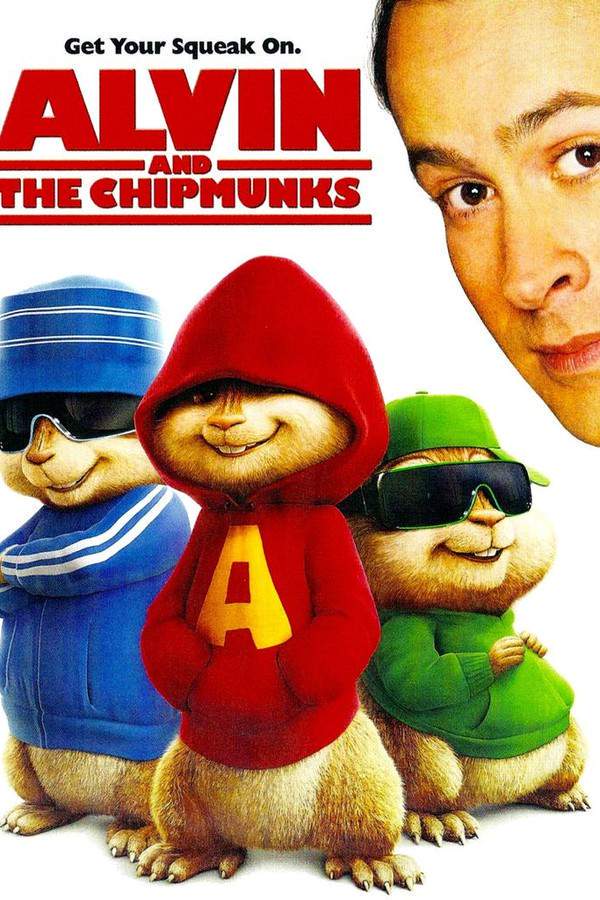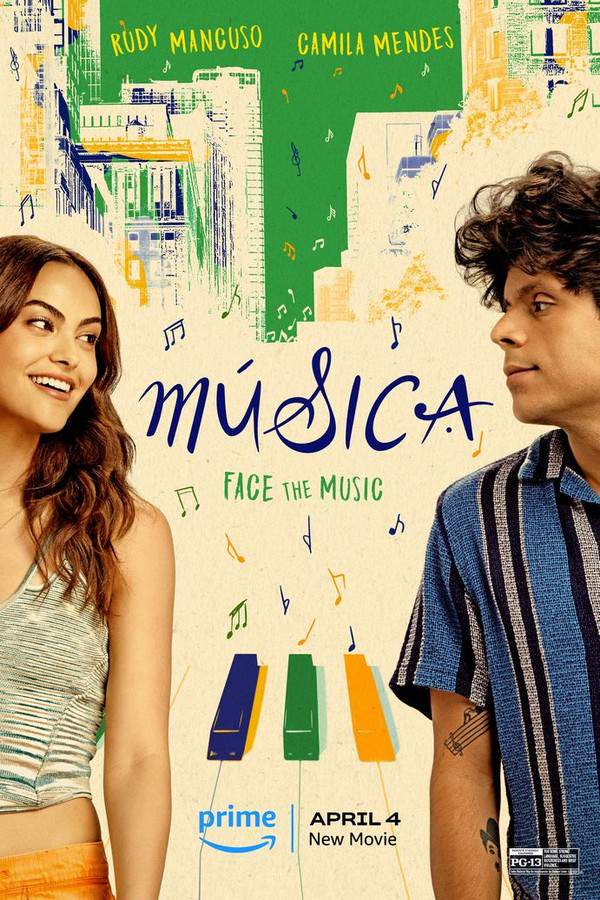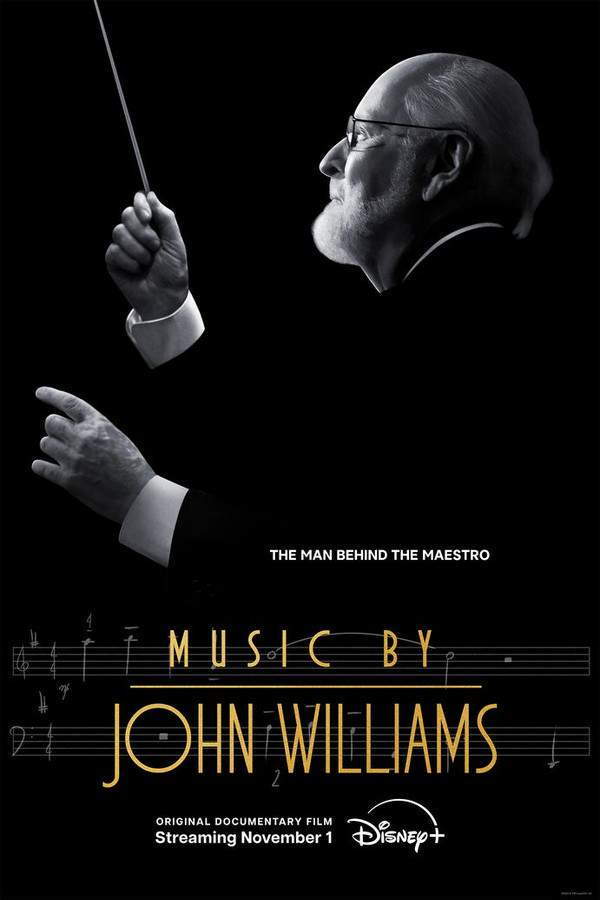Piece By Piece 2024
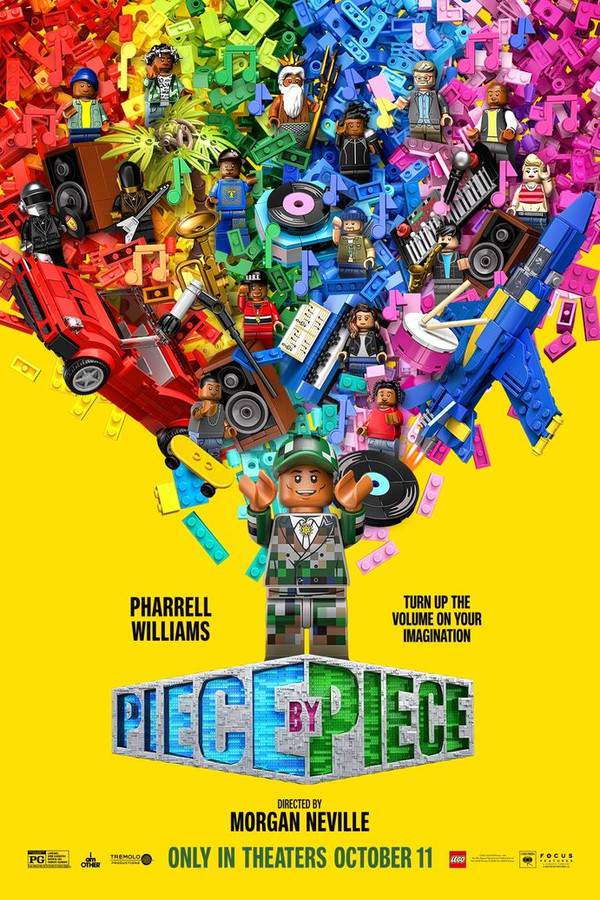
"Piece By Piece" explores the life of music icon Pharrell Williams, using LEGO® animation to depict his journey from his early years to becoming a global star. The film showcases his creative development and features a soundtrack inspired by his music.
Does Piece By Piece have end credit scenes?
No!
Piece By Piece does not have end credit scenes. You can leave when the credits roll.
Meet the Full Cast and Actors of Piece By Piece
Explore the complete cast of Piece By Piece, including both lead and supporting actors. Learn who plays each character, discover their past roles and achievements, and find out what makes this ensemble cast stand out in the world of film and television.
External Links and Streaming Options
Discover where to watch Piece By Piece online, including streaming platforms, rental options, and official sources. Compare reviews, ratings, and in-depth movie information across sites like IMDb, TMDb, Wikipedia or Rotten Tomatoes.
Ratings and Reviews for Piece By Piece
See how Piece By Piece is rated across major platforms like IMDb, Metacritic, and TMDb. Compare audience scores and critic reviews to understand where Piece By Piece stands among top-rated movies in its genre.

The Movie Echo Score
Piece By Piece delivers an inventive visual approach but struggles with sustained engagement. Critics praise its playful use of the Lego medium and vibrant presentation of Pharrell Williams’s synaesthesia, while noting that the narrative often feels thin and the subject lacks deeper fascination. The film’s inventive craft and spirited soundtrack create an engaging experience, yet intermittent pacing issues and uneven emotional depth temper its lasting impact. Overall, it offers a lively documentary spin that entertains more than it deeply resonates.
The Movie Echo Score Breakdown for Piece By Piece

Art & Craft
In terms of art and craft, the film’s inventive Lego animation and brisk editing form its strongest asset. The playful visual style channels Pharrell Williams’s synaesthesia through an understated palette of primary hues and kinetic motion. Direction maintains a measured yet lively tempo, while production design consistently underscores the album covers and stage settings. Although some critics question the justification for the plastic medium, its creative cohesion ultimately enhances the documentary’s distinctive presentation.

Character & Emotion
When it comes to character and emotion, the portrayal of Pharrell Williams generates mixed engagement. The documentary highlights his maturation and creative process through interviews and stylized vignettes, yet several viewers found his personal arc underexplored. Moments of existential reflection and affectionate biographical snapshots provide brief emotional resonance, but pacing gaps and surface-level anecdotes limit deeper connection. Consequently, the film evokes intermittent empathy without fully sustaining emotional investment.

Story & Flow
In terms of story and flow, Piece By Piece embraces an unconventional documentary structure that alternates between playful Lego sequences and interview segments. Many reviewers commend its inventive originality and thematic moral on stardom, while others point to sporadic filler and a sense of narrative thinness. Pacing shifts from energetic montages to slower reflective beats, resulting in uneven engagement. The overall coherence wavers, offering fresh ideas but lacking consistent narrative thrust.

Sensory Experience
When it comes to sensory experience, the film excels through its vibrant soundtrack and immersive color palette. The integration of Pharrell Williams’s music creates infectious rhythmic energy, complemented by dynamic sound design during animated sequences. Visually, the Lego aesthetics and trippy animations produce a cohesive style that mirrors the artist’s creative spirit. Occasional superficial visual moments draw mild critique, yet the overall sensory cohesion remains a compelling attribute.

Rewatch Factor
In terms of rewatch factor, the documentary’s playful presentation and musical highlights encourage repeat viewings among fans. The inventive Lego medium and spirited soundtrack reveal new details upon subsequent sessions, although intermittent narrative gaps may lessen appeal for casual audiences. While the visual whimsy and rhythmic editing reward returning viewers, the film’s thematic depth and character engagement fall short of sustaining long-term fascination. It remains pleasant but not uniformly compelling on repeat.

63
Metascore
6.6
User Score


83%
TOMATOMETER

89%
User Score

/10
IMDb Rating

74
%
User Score

3.6
From 353 fan ratings
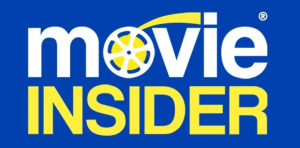
3.75/5
From 4 fan ratings
Take the Ultimate Piece By Piece Movie Quiz
Challenge your knowledge of Piece By Piece with this fun and interactive movie quiz. Test yourself on key plot points, iconic characters, hidden details, and memorable moments to see how well you really know the film.
Piece By Piece Quiz: Test your knowledge of the documentary 'Piece By Piece' featuring Pharrell Williams through various engaging questions.
What innovative style is used in the documentary 'Piece By Piece'?
Lego animation style
Stop motion
2D animation
Real-life footage
Show hint
Full Plot Summary and Ending Explained for Piece By Piece
Read the complete plot summary of Piece By Piece, including all major events, twists, and the full ending explained in detail. Explore key characters, themes, hidden meanings, and everything you need to understand the story from beginning to end.
The film is a documentary presented in an innovative Lego animation style, where the participants all portray themselves. The narrative kicks off with Pharrell Williams](/actor/pharrell-williams) in conversation with the documentary filmmaker Morgan Neville. Pharrell expresses his desire to recount his journey through a Lego lens, illustrating how he perceives the world, akin to constructing new creations from existing materials. Although Neville finds this concept unconventional, he decides to embrace it.
Pharrell’s tale begins in Virginia Beach, where he grew up in the Atlantis housing projects with his parents, Pharaoh and Carolyn. He reveals that he has synesthesia, an intriguing condition where he sees colors when he hears music. This unique experience fueled his fascination with artists like Stevie Wonder, igniting his passion for music. Despite facing academic challenges, he formed a close bond with Chad Hugo](/actor/chad-hugo) and together they began their music journey, collaborating with emerging talents like [Missy Elliott, Pusha T, and Timbaland, who is actually Pharrell’s cousin.
As their friendship blossomed, Pharrell, Chad, and Shay Haley joined forces to create The Neptunes, which later evolved into the group N.E.R.D. They seized the opportunity to perform at their school’s talent show in front of renowned record producer Teddy Riley. Impressed with their skills, Teddy signed them, leading to Pharrell contributing creatively, including writing his verse for the song “Rump Shaker” with Teddy’s group Wreckx-n-Effect—but this meant that he was unable to focus on developing his personal music.
In due time, Pharrell and Chad collaborated with rapper N.O.R.E.](/actor/nore) on the hit single “Superthug”, followed by working with Pusha T and [alice in their duo Clipse, and later contributing to Mystikal on “Shake Ya Ass.” This surge of creativity caught the attention of other heavyweights like Jay-Z with tracks such as “I Just Wanna Love U [Give It 2 Me]”, Busta Rhymes, Gwen Stefani on “Hella Good” and “Hollaback Girl,” and Justin Timberlake with “Like I Love You.” Jay-Z affectionately describes Pharrell as a “younger brother” to many artists in the industry who sought to protect him as he opened doors for others.
Their collaboration soon led them to Snoop Dogg, famous for his iconic gangsta rap persona. During a light-hearted session that involved some “PG spray” (Lego’s playful substitute for cannabis), they collectively crafted “Drop It Like It’s Hot.” Snoop acknowledges that this track marked his first number one hit, crediting Pharrell for allowing him to tap into a more playful side.
Pharrell then took steps to assert himself as a solo artist, starting with the single “Frontin” alongside Jay-Z. One record producer notes that this collaboration should have launched Pharrell into solo fame. However, in his quest for success, Pharrell diversified into other realms like skateboarding and fashion. He founded the Billionaire Boys Club brand and rolled out Ice Cream footwear, though some remarked that he risked stretching himself too thin, potentially diluting his signature brilliance.
In an insightful interview, Pharrell’s wife Helen shares their love story, recalling the first time they met at one of his parties. Surrounded by other admirers, he stood out by sincerely engaging her until she revealed she was in a relationship. After she ended that relationship, they began dating, but Pharrell had his reservations about commitment, eventually leading to a proposal that transformed their relationship.
At one point when Pharrell found himself in a creative slump, he was commissioned to write music for the “Despicable Me” films. Spending cherished time with his family, particularly with his infant son, he found fresh inspiration and composed the universally beloved hit “Happy.” The song propelled him to global acclaim, with fans across various countries recreating its iconic music video. The emotional climax features Pharrell’s interview with Oprah, where he tears up recounting his experiences.
As Pharrell converses with Neville, he reflects candidly on how his family and friends have been pivotal to his achievements. He articulates concerns regarding the political climate, particularly the issue of police brutality against African Americans. Pharrell contributed to Kendrick Lamar’s anthem “Alright,” known for its powerful hook: > “Do you hear me? Do you feel me? We gon’ be alright!” which resonated profoundly within movements like Black Lives Matter.
As the narrative nears its conclusion, Pharrell shares his enduring philosophy about life and creativity—how one can take disparate elements and construct something remarkable, similar to the Lego blocks. The film wraps up with a vibrant concert featuring Pharrell performing his uplifting song “Piece By Piece.” The credits note that some of the portrayed events were somewhat exaggerated, humorously clarifying that Pharrell has never journeyed to outer space.
Uncover the Details: Timeline, Characters, Themes, and Beyond!

Coming soon on iOS and Android
The Plot Explained Mobile App
From blockbusters to hidden gems — dive into movie stories anytime, anywhere. Save your favorites, discover plots faster, and never miss a twist again.
Sign up to be the first to know when we launch. Your email stays private — always.
Watch Trailers, Clips & Behind-the-Scenes for Piece By Piece
Watch official trailers, exclusive clips, cast interviews, and behind-the-scenes footage from Piece By Piece. Dive deeper into the making of the film, its standout moments, and key production insights.
Piece By Piece Themes and Keywords
Discover the central themes, ideas, and keywords that define the movie’s story, tone, and message. Analyze the film’s deeper meanings, genre influences, and recurring concepts.
Piece By Piece Other Names and Titles
Explore the various alternative titles, translations, and other names used for Piece By Piece across different regions and languages. Understand how the film is marketed and recognized worldwide.
Similar Movies To Piece By Piece You Should Know About
Browse a curated list of movies similar in genre, tone, characters, or story structure. Discover new titles like the one you're watching, perfect for fans of related plots, vibes, or cinematic styles.
Quick Links: Summary, Cast, Ratings, More

What's After the Movie?
Not sure whether to stay after the credits? Find out!
Explore Our Movie Platform
New Movie Releases (2025)
Famous Movie Actors
Top Film Production Studios
Movie Plot Summaries & Endings
Major Movie Awards & Winners
Best Concert Films & Music Documentaries
Movie Collections and Curated Lists
© 2025 What's After the Movie. All rights reserved.





